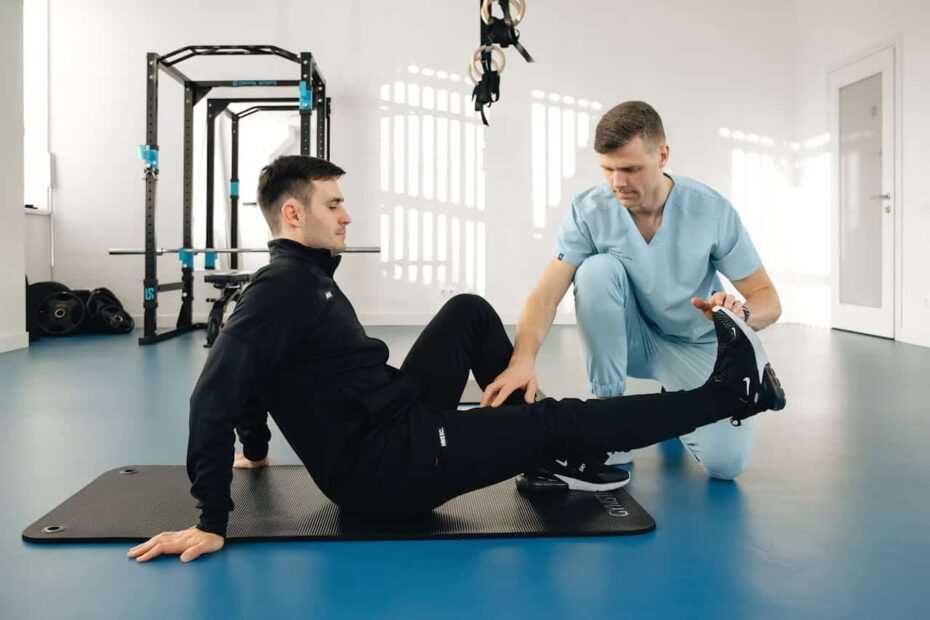Suffering an injury can be a frustrating and painful experience. Whether it’s a minor sprain or a more serious issue, rehabilitation is key to getting back on your feet and regaining your previous level of fitness.
But where do you start? With so much advice out there, it can be overwhelming trying to figure out the best approach. Luckily, we’ve compiled some tips for rehabilitating after an injury that will help guide you towards recovery.
From understanding the importance of rest to seeking professional help when needed, these strategies will set you on the path towards regaining control over your physical health. So let’s dive in and get started on this journey together!
- Rest And Recovery
- Proper Nutrition And Hydration
- Pain Management
- Physical Therapy
- Targeted Exercises
- Range Of Motion And Flexibility
- Gradual Return To Activity
- Building Strength And Endurance
- Mental Health And Support
- Preventing Future Injuries
- Importance of Effective Rehabilitation and Seeking Professional Help
Rest And Recovery
Recovering from an injury can be a challenging process, both physically and mentally. It’s important to take the time to rest and recover properly in order to ensure that your body is healing correctly.
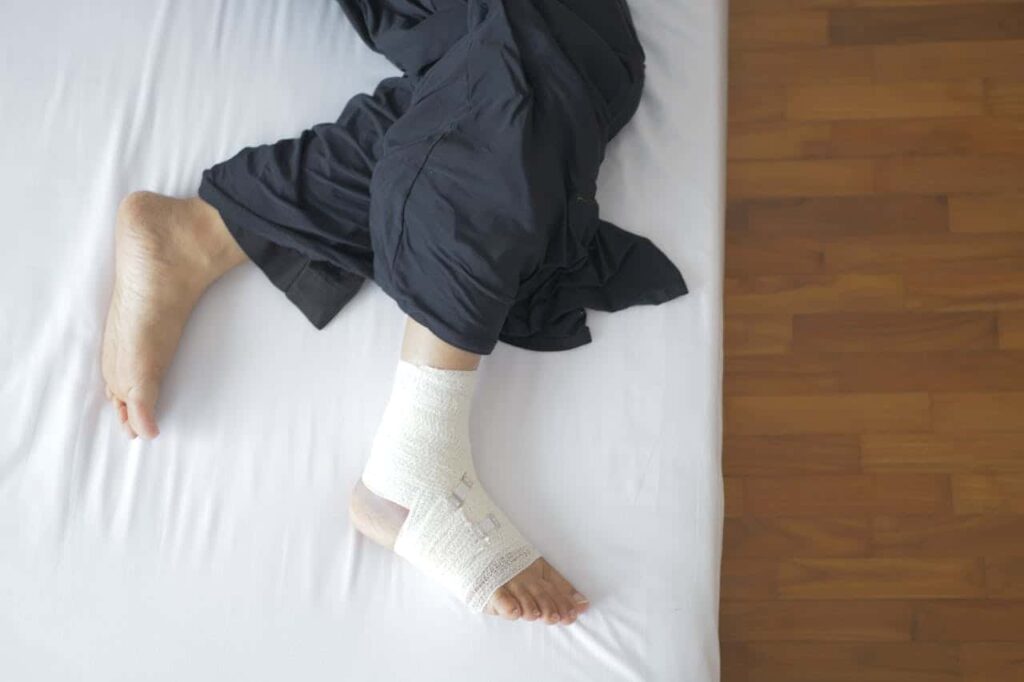
Mental relaxation plays a key role in this process – stress management techniques such as deep breathing exercises or meditation can help you feel more relaxed and at ease.
Another crucial aspect of recovery is sleep quality. Getting enough restful sleep each night allows your body to repair itself and helps reduce inflammation. If you’re having trouble sleeping, try incorporating relaxation techniques into your bedtime routine or speak with your doctor about possible solutions.
Time management is also essential during the rehabilitation period – it’s important to set realistic goals for yourself while allowing sufficient time for rest and recovery.
By taking care of yourself through proper mental and physical relaxation, managing stress levels, getting adequate sleep, and practicing effective time management strategies, you’ll be on the right track towards full recovery. The next step is ensuring that you’re fueling your body with proper nutrition and hydration.

Proper Nutrition And Hydration
Healthy eating and proper hydration are critical components of injury rehabilitation. Ensuring that you get sufficient nutrients is vital for the body’s healing process, as it helps to repair damaged tissues and replenish lost energy. Moreover, maintaining a well-balanced diet not only aids in recovery but also reduces inflammation levels.
The importance of staying hydrated cannot be overstated when rehabilitating from an injury. Water plays a crucial role in various physiological functions such as transporting oxygen and nutrients throughout the body, regulating temperature, and lubricating joints. Therefore, make sure that you drink enough water regularly to stay adequately hydrated.
In addition to healthy eating habits and proper hydration, meal planning can help ensure that your nutrient requirements are met daily. Dietary supplements may also provide additional support if required; however, they should only be taken upon consultation with a healthcare professional.
As we move forward with our journey towards full physical recovery after an injury, managing pain becomes a significant concern.

Pain Management
Proper nutrition and hydration are vital to the rehabilitation process, but managing pain is equally important.
Did you know that around 50 million Americans suffer from chronic pain?
Pain management can make a huge difference in recovery time and quality of life for those dealing with injuries.
Stretching techniques can help increase flexibility and range of motion while also reducing muscle tension.
Heat therapy, such as using a heating pad or taking a warm bath, can help relax muscles and ease pain. On the other hand, cold therapy, like icing an injury or taking a cold shower, can reduce swelling and inflammation.
Massage therapy and acupuncture treatment are also effective options for managing pain during rehabilitation.
Incorporating these methods into your daily routine can aid in recovery and bring relief from discomfort.
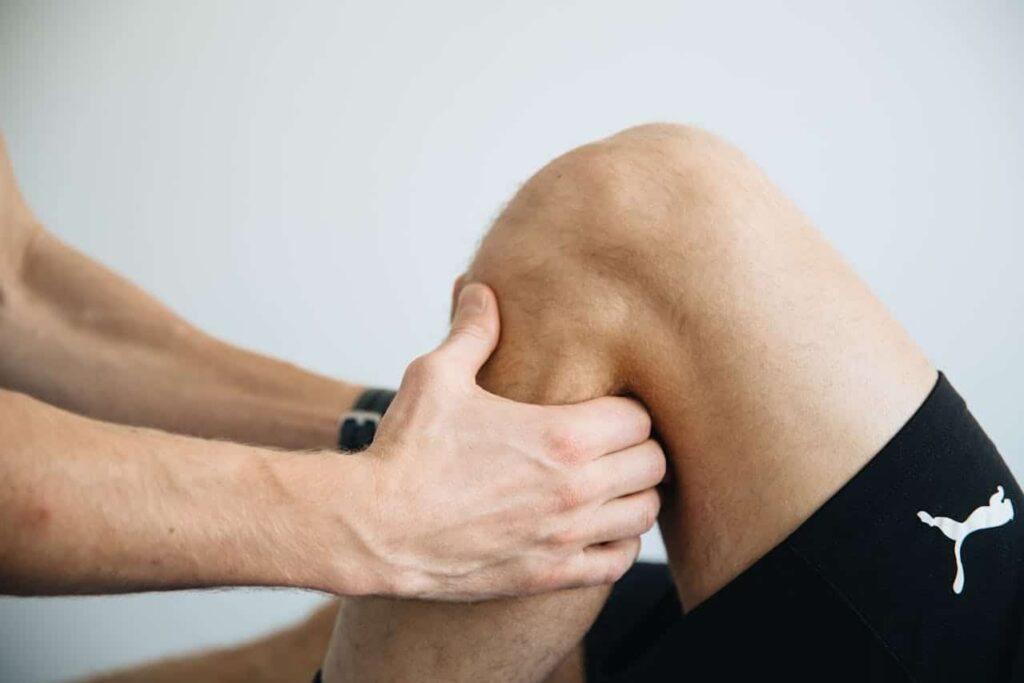
Physical Therapy
Physical Therapy is an essential component of any rehabilitation program after sustaining an injury.
Physical therapists are trained to assess injuries, develop personalized treatment plans and educate individuals on how to prevent future injuries.
During your physical therapy sessions, you can expect a thorough assessment of your injury.
This may include evaluating your range of motion and strength, as well as identifying areas for improvement.
Your therapist will then develop exercise modifications tailored to meet your unique needs and abilities.
With their guidance, you’ll work towards regaining function by strengthening the affected area while also preventing further damage.
Also read Work Injuries Management Using Physiotherapy
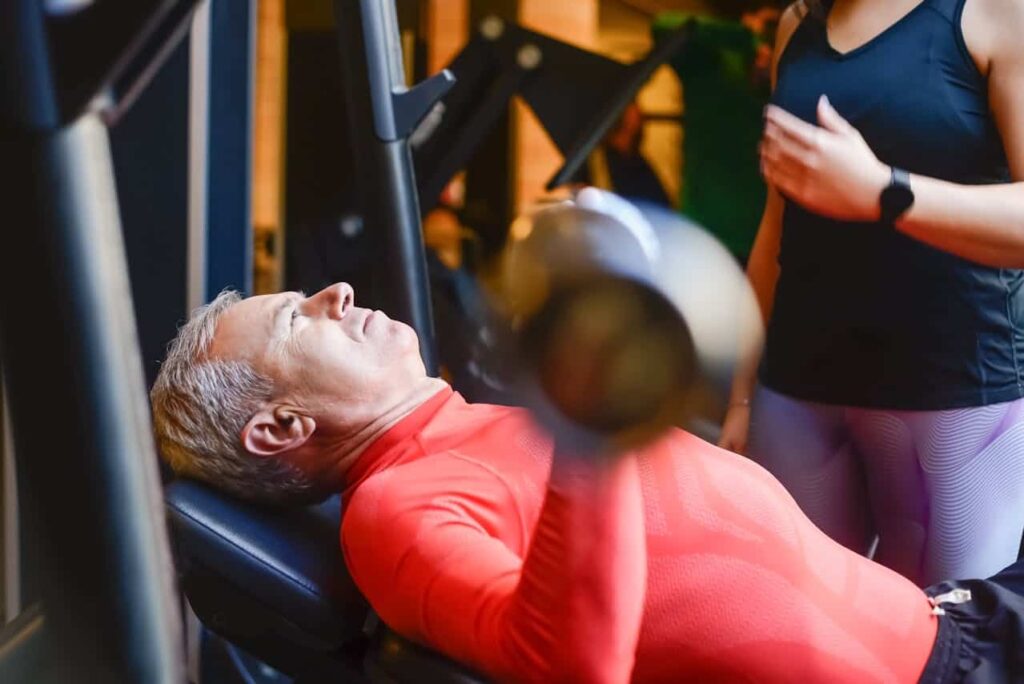
Targeted Exercises
As the saying goes, ‘practice makes perfect.’ The same concept applies to injury rehabilitation progress. Resistance training and isolation exercises are crucial in rebuilding strength and muscle activation after an injury. These exercises target specific muscles that may have weakened during recovery time or were not previously utilized before the injury.
Injury prevention is also a major benefit of targeted exercises. Strengthening these muscles can help prevent future injuries by improving overall stability and balance. It’s important to remember that proper form and technique should always be prioritized to avoid further damage. Incorporating targeted exercises into your rehab routine can greatly improve your chances of a successful recovery.
Muscle activation and building strength through resistance training and isolation exercises are essential steps for rehabilitation progress. However, it’s also important to focus on range of motion and flexibility.
In the next section, we’ll explore how incorporating stretching techniques can aid in your journey towards full recovery.

Range Of Motion And Flexibility
Range of Motion and Flexibility are crucial aspects of rehabilitating after an injury.
Stretching techniques, foam rolling, yoga poses, mobility drills, and resistance bands serve as excellent tools for improving flexibility and restoring range of motion.
Stretching is one of the most effective ways to enhance joint mobility and increase flexibility.
Foam rolling is another technique that can help alleviate muscle tightness in specific areas.
Incorporating yoga poses into your routine not only helps with stretching but also with balance and stability.
Mobility drills are exercises designed to improve movement patterns by increasing joint mobility while building strength at the same time.
Resistance bands offer a low-impact way to strengthen muscles without putting too much stress on joints.
To ensure a gradual return to activity, it’s important to focus on regaining range of motion and flexibility before jumping back into intense workouts or activities.
By incorporating these techniques consistently into your rehabilitation program, you’ll be able to regain full function in the injured area more quickly and reduce the risk of re-injury.

Gradual Return To Activity
A gradual return to activity is crucial for successful rehabilitation after an injury. Progression planning should be done with the help of a healthcare professional, taking into consideration the severity and type of injury, as well as any limitations or restrictions that may still be in place. It’s important to start slowly and increase intensity gradually over time.
Monitoring progress is key during this phase of rehabilitation. Pay attention to how your body responds to different activities and adjust intensity accordingly. Be patient and avoid pushing too hard too soon, which can lead to setbacks or reinjury. Seeking professional guidance throughout the process can also help ensure a safe and effective return to normal activity levels.
Remember, each person’s path to recovery will look different based on their individual circumstances and goals.
The next step in the journey towards full recovery involves building strength and endurance.

Building Strength And Endurance
To continue with the process of rehabilitation after an injury, building strength and endurance is key. Symbolically speaking, think of your body as a house that needs to be reinforced from top to bottom.
Resistance training will help you build muscle mass and strengthen bones while cardiovascular exercise will improve overall stamina. To ensure gradual progression in your workouts, it’s important to start slow and work your way up gradually.
Cross-training can also come in handy by incorporating different exercises into your routine for a more well-rounded workout. Additionally, injury prevention should always be kept in mind by avoiding overexertion or improper technique during exercises.
Here are some tips for building strength and endurance:
- Start with low resistance weights and gradually increase.
- Incorporate interval training into your cardio regimen.
- Try new activities such as swimming or yoga to add variety to your workouts.
- Always listen to your body – take breaks when needed and don’t push yourself too hard.
Remember, recovery takes time so be patient and consistent with your efforts towards building strength and endurance.

Mental Health And Support
Building strength and endurance is an essential part of rehabilitating after an injury. However, it’s not the only aspect to consider when trying to get back on track. Coping mechanisms play a crucial role in recovering from physical injuries as well.
Emotional support can help immensely during this challenging time. Seeking out therapy options or joining a support group can provide you with much-needed emotional support while dealing with the stress of recovery. Self-care practices like meditation or journaling can also be helpful in managing emotions and reducing anxiety.
Additionally, many communities offer resources such as free counseling services or exercise programs for people who are recovering from an injury. Don’t hesitate to take advantage of these resources if they’re available to you. Remember that taking care of your mental health is just as important as taking care of your physical health during rehabilitation.
Preventing future injuries should always be a priority once you’ve recovered from one injury successfully. It’s important to remember how far you’ve come and what steps were taken to recover so that you don’t have to go through the same process again down the road. Make sure to continue practicing good habits like stretching before exercising, staying hydrated, wearing proper gear when playing sports, and listening carefully when your body tells you something isn’t right.
By incorporating these healthy habits into your routine, you’ll decrease your risk of getting injured again and ensure that all your hard work doesn’t go to waste!

Preventing Future Injuries
Now that you have successfully rehabilitated from your injury, it’s important to take steps to prevent future injuries.
The best way to do this is through cross training benefits. Cross training involves incorporating different types of exercises into your routine, which can help improve overall strength and flexibility while reducing the risk of overuse injuries. Consider adding activities such as swimming, yoga or cycling to complement your main sport or exercise.
Another key aspect in preventing future injuries is incorporating injury prevention exercises into your routine. These exercises focus on strengthening specific muscle groups and improving joint mobility to reduce the likelihood of common sports-related injuries.
proper footwear choices are also crucial for injury prevention– make sure you choose shoes that provide adequate support and cushioning for your chosen activity.
Lastly, warming up properly before any physical activity and stretching after can lower the chances of muscle strains or tears.
Remember, taking these preventative measures will not only minimize the risk of re-injury but also enhance performance and promote mastery in your desired activity. Incorporating cross training benefits along with targeted injury prevention exercises, appropriate footwear selections, warm-up routines and stretching techniques will ensure a safer path towards reaching your fitness goals without being sidelined by an unforeseen injury.
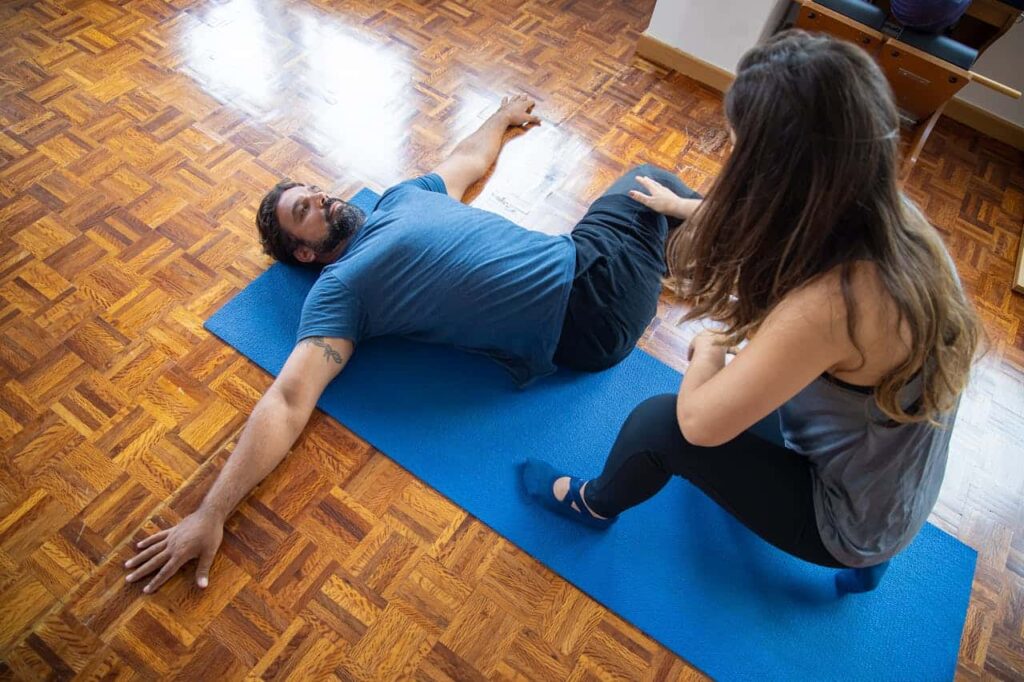
Importance of Effective Rehabilitation and Seeking Professional Help
Rehabilitating after an injury can be a challenging and lengthy process. However, by following the tips outlined above, you can ensure that you are giving your body the best possible chance to heal and recover.
One interesting statistic is that around 80% of people will experience back pain at some point in their lives. This highlights just how common injuries and health issues can be, but it also serves as a reminder that there are effective rehabilitation methods available for those who need them.
So if you find yourself dealing with an injury or chronic pain, don’t hesitate to seek out professional help and support – your body (and mind) will thank you!
